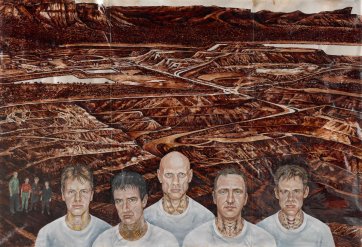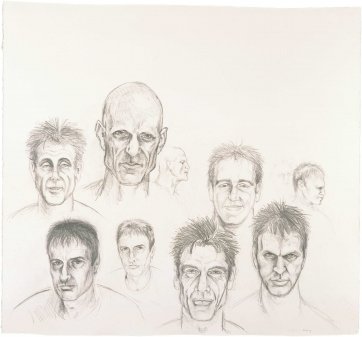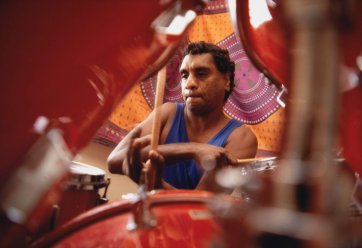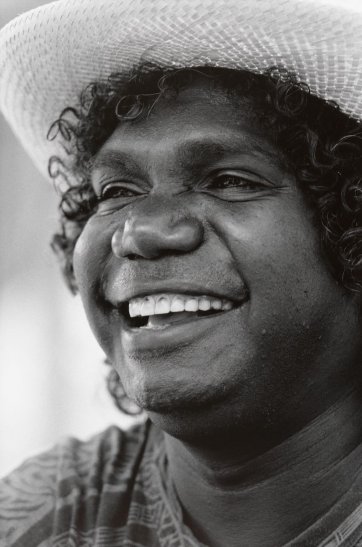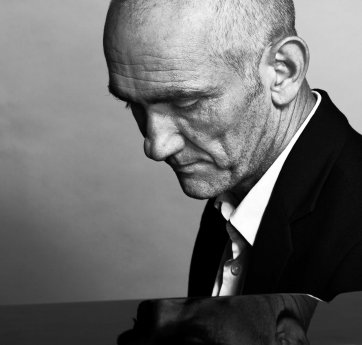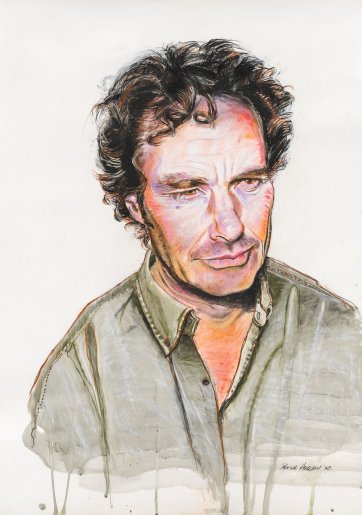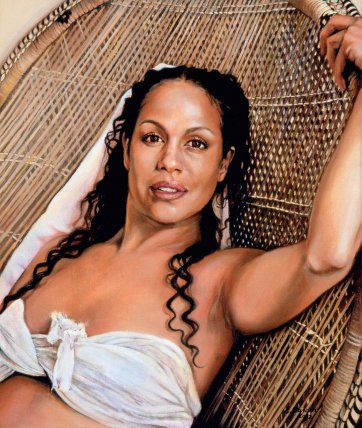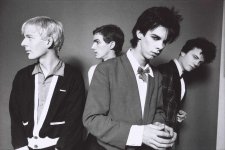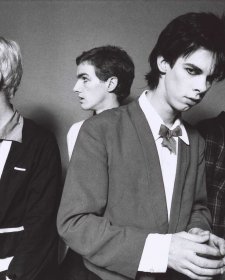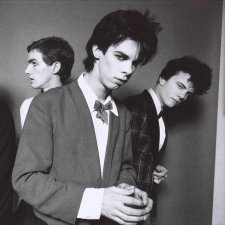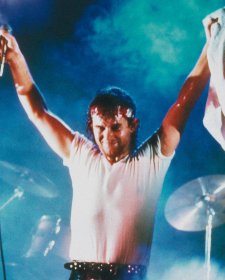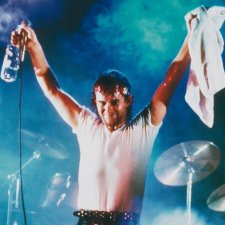Rock’s raw potency made it the ideal medium for fomenting protest. The 1970s, 80s and onwards saw calls for social and environmental justice ring out through song: for Indigenous rights, for recognition of the Stolen Generations, for Treaty; and against mining and nuclear energy. Powerful and passionate, music’s storytellers rendered deep injustices visible and mainstream.
1 Nothing's as precious as a hole in the ground, 2001. 2 Head studies: Preparatory study for 'Nothing's as precious as a hole in the ground', 2001. Both eX de Medici.
© eX de Medici
From 1976, Midnight Oil’s urgent, aggressive energy fired up crowds in Sydney. The Mirning trio of Bunna Lawrie and his brothers formed funk-rock-reggae group Coloured Stone at Koonibba, South Australia in 1977, while Warumpi Band came together in Papunya, Northern Territory in 1980. ‘You can’t change the rhythm of my soul’ sang Pitjanjatjara musician Bart Willoughby of First Nations rock-reggae band No Fixed Address, in their anthemic 1981 track ‘We Have Survived’. And Yolŋu singer/songwriter Dr M Yunupingu formed Yothu Yindi in 1986.
1 Bart Willoughby, c. 2000 Penny Tweedie. © Estate of Penny Tweedie. 2 Mandawuy Yunupingu, 1991 (printed 2011) Lorrie Graham. © Lorrie Graham.
Politics, as ever, informed the temper of the times. The Mabo Native Title case was in the courts, and the protests around the 1988 Bicentenary rocked. Indigenous bands made music history, singing in language, touring internationally, and overcoming racist exclusion from some pubs, along with police harassment at gigs.
Together, Indigenous and non-Indigenous protest rockers created anthems that would inspire future generations. Two hits of 1991 – Yothu Yindi’s ‘Treaty’ and the ballad ‘From Little Things Big Things Grow’ – began as campfire collaborations between singer-songwriter Paul Kelly and, respectively, Yunupingu and Murri songman Kev Carmody. Non-Indigenous Warumpi Band guitarist Neil Murray wrote ‘My Island Home’ about Galiwin'ku, NT for his lead singer, Yolŋu man GR Burarrwaŋa, almost a decade before Christine Anu made it famous.
1 Paul Kelly, 2007 Peter Brew-Bevan. © Peter Brew-Bevan. 2 Neil Murray, 2008 Peter Hudson. © Peter Hudson. 3 Waiting for Zipporah (Christine Anu), 2002 Elizabeth Barden. © Elizabeth Barden.
"How can we dance when our earth is turning?" taken from ‘Beds Are Burning’
Written by Robert Hirst, James Moginie and Peter Garrett. © Spirit Music. Licensed by Sony/ATV Music Publishing (Australia) Pty Ltd
